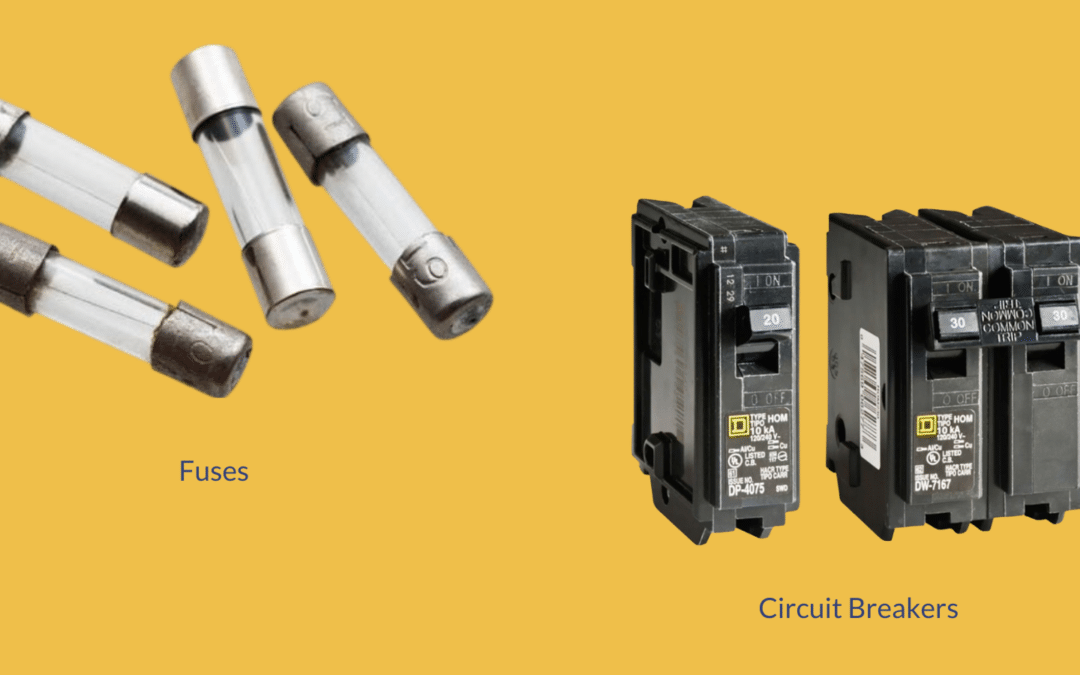As the main source of power in our homes, electricity is a necessity and must be properly regulated for safety. The two most common types of circuit protection are fuses and circuit breakers, used in both residential homes as well as commercial and industrial businesses. Both serve the same purpose, to protect electrical circuits by preventing surges or overloads that can lead to fires in homes or commercial businesses. Here are the main differences between the two options:
Fuses
Fuses come in varying types, both for residential use as well as commercial. The most common is made up of a metal or wire filament, which completes the circuit, enclosed in a glass, porcelain or ceramic case. Most fuses are plugged into a central fuse box, which electricity passes through, the fuse allowing the current to pass unobstructed across the metal or wire filament between circuits. If there’s an overload or short, the filament melts and stopping the power surge, preventing damage. Fuses can be quicker for interrupting the flow of power, but once a fuse is blown, it must be replaced.
Circuit Breakers
Circuit breakers can function in two different ways. Firstly, they work through the use of an electromagnet. Secondly, they can work through the use of a metal strip. For both, once the circuit breaker is powered on, the breaker allows current to safely pass from one part of the breaker to the other, usually across a strip. If the current reaches unsafe levels, the force becomes strong enough to flip or bend a metal lever in the switch mechanism, breaking the current and preventing damage. Unlike fuses, circuit breakers do not have to be replaced after a power surge. You can simply flip the switch back on, which reconnects the circuit.
Still have questions about fuses and circuit breakers? We’re here to help! Give us a call. We’re here to support you with licensed and trained electricians.

